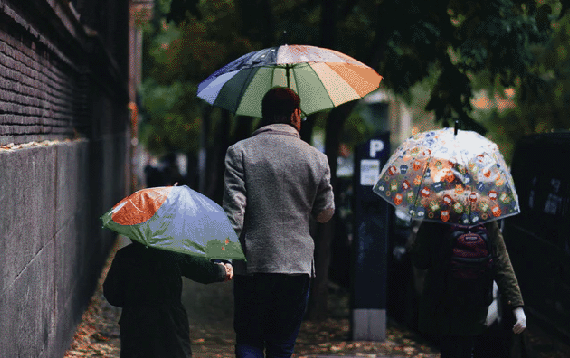One of the great pillars of the European Green Deal for sustainable growth in the EU is moving towards a circular economy. This concept is opposed to a linear economy because its purpose is to reuse materials and resources so they can re-enter the economy. Such an objective is not an easy one, since, as the European Green Deal´s Executive Vice President, Frans Timmermans, recognized in March, currently only 12 percent of materials and resources are recovered.
More than half of the world’s citizens live in cities and this percentage could reach almost 70 percent by 2050, according to United Nations forecasts. For this reason, it is not surprising that the success of this key measure of the European Green Deal will depend heavily on the ability of cities to reuse their resources
CIRCULAR URBAN PLANNING
Sustainable urban planning applies a circular economy´s principles to the planning of buildings and cities. The aim is to make cities act as an ecosystem with circular dynamics through various strategies, such as, for example, optimizing the collection of resources such as electricity and water for reuse whenever possible. “As this is not done, the entire volume of collected water goes through the same purification process, regardless of its origin, with the environmental cost involved,” reflects Laura de la Plaza Hidalgo, urban architect and co-author of the book Elements of Sustainable Architecture. “In the case of both water and electricity, I think it could be interesting to make land reserves that can be used for infrastructure for sustainable energy generators or water purification that supply a great number of homes and that make them efficient.”

Good waste management is also essential to ensure that resources re-enter the economy, an objective also closely related to the “cradle to cradle” concept and the need to use materials that can be reused for something new once the function for which they were designed is finished. Encouraging the collection of classified waste and establishing more recycling plants and industries are tools to increase the percentage of materials that are recovered.
REDISTRIBUTION OF SPACES TO OPTIMIZE MOBILITY
Other key strategies to achieve a sustainable urban ecosystem are those related to mobility. The term “15-minute city” made headlines in January 2020 when Paris´ mayor, Anne Hidalgo, included it in her reelection campaign for the March elections.The idea behind this concept is that people should be able to reach all the places related to their daily basic needs such as work, shopping, health, and culture in a short walk or bike ride, of a maximum of 15 minutes.
“The dimensioning of the blocks, the design of the streets, the distribution of the uses assigned to each plot, etc., are now done with cars in mind. It is something that we have so integrated that most of the time we do not even question it and it is a circumstance that is fed back since some people who would like to make more trips on foot do not do so because they perceive the streets as unsafe, especially in the case of the elderly and people who move with children,” affirms Laura de la Plaza Hidalgo. To try to reverse this reality, there are different initiatives in various cities around the world to give a new use to public spaces, the use of which was previously mostly used by cars. One example is Barcelona´s “Superilles” project which advocates a reorganization of the city in which several blocks are brought together for the creation of “superblocks” where motorized traffic is limited and parking spaces are reduced in favor of the creation of spaces for basic social functions, sports, games for children, etc.
A greater range of neighborhood leisure activities is not the only important thing, since people have many more needs as well. Regarding this, Laura de la Plaza Hidalgo adds that “it is also important to design cities that distribute schools, commercial services, health centers, etc., so that they are accessible from within a 100-500 m radius from their inhabitants. That’s why it’s crucial that the design of people’s daily routes is perceived as safe for usage.” Green areas should also be distributed in such a way that anyone can access them on foot, while promoting that their maintenance has the least possible environmental impact.
Commuting to work, which is the great problem of daily mobility, should not be ignored in the plans for new approaches to cities. There are millions of people who travel several tens of kilometers from their homes to their jobs every day, with the consequent problems of pollution and consumption of resources that this entails. It’s undoubtedly one of the most difficult fronts to resolve, and initiatives like Portland’s “20-minute neighborhoods” directly exclude workplaces from its city reorganization plans. However, in the medium to long term, it would be interesting for public institutions to advocate for measures to promote the implementation of work centers distributed in different points throughout the city so that housing can coexist with the workplace, instead of large office complexes concentrated in specific areas.
“It’s important to stop designing cities in which the car is the absolute protagonist.”
Finally, we must not forget that buildings that are built in new urban developments must integrate sustainable strategies in their orientations, passive strategies, materials, and their construction techniques, etc.
SOCIAL SUSTAINABILITY
The optimization of services within a neighborhood encourages its inhabitants to want to live in it, which also translates into an economic reactivation of an area.
In a nutshell, none of the measures contemplated above could work without one last fundamental ingredient: the social component that links people with their environment. When neighbors feel that all their needs are covered in their neighborhood, not only are unnecessary trips avoided, but neighborhood safety is improved and the deterioration of urban infrastructure and furniture is prevented, since residents take care of their environment because they understand its value.
Comments on this publication